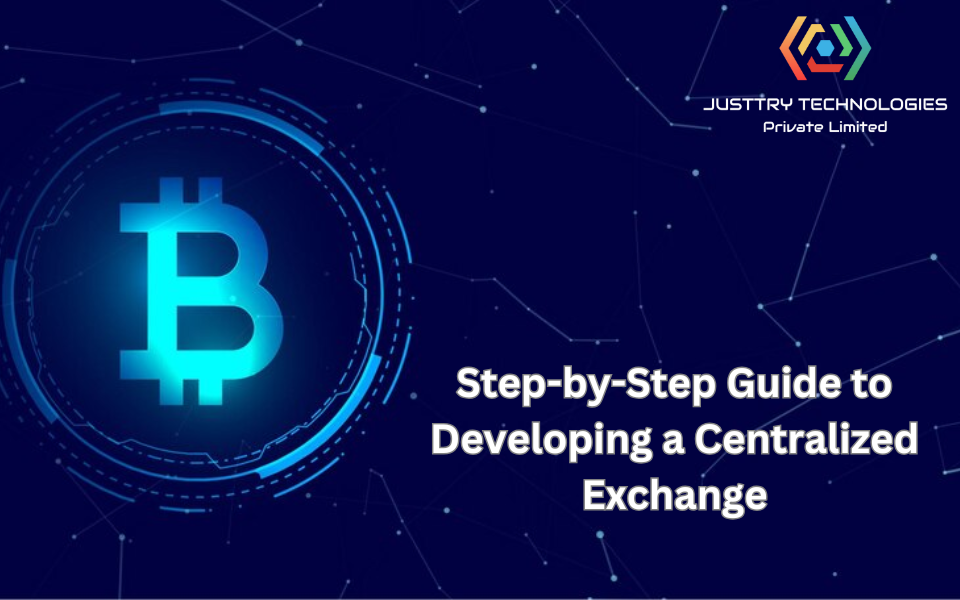Step-by-Step Guide to Developing a Centralized Exchange: Costs and Key Insights

As the cryptocurrency market continues to grow, centralized exchanges (CEXs) remain the backbone of digital asset trading. For businesses aiming to enter this lucrative space, understanding the process of developing a centralized exchange and the associated costs is essential. In this guide, we explore the step-by-step approach to building a robust CEX, highlighting critical considerations and how a Decentralized Crypto Exchange platform differs in structure and functionality.
What is a Centralized Exchange?
A centralized exchange is a platform where users can trade cryptocurrencies in a secure and controlled environment. Unlike decentralized exchanges, CEXs act as intermediaries, offering features like high liquidity, user-friendly interfaces, and faster transaction processing. However, they also face challenges like security vulnerabilities and regulatory compliance.
Step-by-Step Process to Develop a Centralized Exchange
1. Market Research and Planning
-
Identify Your Target Audience: Understand your users' preferences, trading habits, and regional regulations.
-
Competitor Analysis: Study existing platforms to identify gaps and opportunities.
-
Define Features: Decide on core functionalities such as trading pairs, order types, and KYC/AML processes.
2. Choose the Right Technology Stack
-
Opt for programming languages like Python, JavaScript, or C++.
-
Integrate blockchain technologies for transparency and security.
-
Consider using a pre-built Decentralized Crypto Exchange platform for faster deployment.
3. Design the User Interface (UI) and User Experience (UX)
-
Focus on intuitive navigation and accessibility.
-
Ensure the design is mobile-friendly for a seamless experience across devices.
4. Develop Core Features
-
User Authentication: Secure login and registration systems.
-
Order Matching Engine: Match buy and sell orders efficiently.
-
Wallet Integration: Enable secure deposits and withdrawals of cryptocurrencies.
-
Trading Dashboard: Offer real-time market data and analytics.
5. Implement Security Measures
-
Use multi-signature wallets for fund security.
-
Enable two-factor authentication (2FA) for user accounts.
-
Conduct regular penetration testing to identify vulnerabilities.
6. Compliance and Licensing
-
Ensure adherence to KYC/AML regulations.
-
Obtain licenses for operating in different jurisdictions.
7. Testing and Quality Assurance
-
Perform rigorous testing to ensure the platform is bug-free.
-
Test for scalability to handle high trading volumes.
8. Launch and Marketing
-
Conduct a soft launch to gather user feedback.
-
Invest in marketing strategies like SEO, PPC, and influencer collaborations.
Cost Breakdown for Developing a Centralized Exchange
The cost of developing a CEX depends on several factors:
-
Development Team: Hiring skilled developers, designers, and blockchain experts can range from $50,000 to $500,000.
-
Technology Stack: Costs vary based on the complexity of the platform and integrations.
-
Security Features: Advanced security measures can add $20,000 to $100,000 to the budget.
-
Licensing and Compliance: Expect to spend $10,000 to $50,000 for legal and regulatory approvals.
-
Marketing and Maintenance: Allocate an ongoing budget for user acquisition and platform updates.
Why Consider a Decentralized Crypto Exchange Platform?
While centralized exchanges dominate the market, decentralized crypto exchange platforms are gaining traction due to their enhanced security and user autonomy. These platforms eliminate intermediaries, reducing the risk of hacking and ensuring greater privacy. Businesses can leverage hybrid models to combine the strengths of both CEXs and DEXs.
Conclusion
Developing a centralized exchange is a complex but rewarding endeavor. By following a structured approach and partnering with experienced blockchain developers, businesses can create a platform that meets market demands and regulatory standards. Whether you choose a centralized model or explore a decentralized crypto exchange platform, the key is to prioritize security, user experience, and scalability. With the right strategy and resources, your exchange can thrive in the competitive cryptocurrency landscape.
- crypto_exchange_development_company
- crypto_exchange_platform_development_company
- White_Label_Crypto_Exchange_Development
- Crypto_exchange_developers_in_India
- Top_Crypto_Exchange_Development_Company
- Cryptocurrency_exchange_development_service
- Centralized_Crypto_Exchange_Development_Company
- Decentralized_Exchange_Development_Service
- crypto_exchange_platform_development
- Questions and Answers
- Opinion
- Motivational and Inspiring Story
- Technology
- Live and Let live
- Focus
- Geopolitics
- Military-Arms/Equipment
- Securitate
- Economy
- Beasts of Nations
- Machine Tools-The “Mother Industry”
- Art
- Causes
- Crafts
- Dance
- Drinks
- Film/Movie
- Fitness
- Food
- Jocuri
- Gardening
- Health
- Home
- Literature
- Music
- Networking
- Alte
- Party
- Religion
- Shopping
- Sports
- Theater
- Health and Wellness
- News
- Culture

